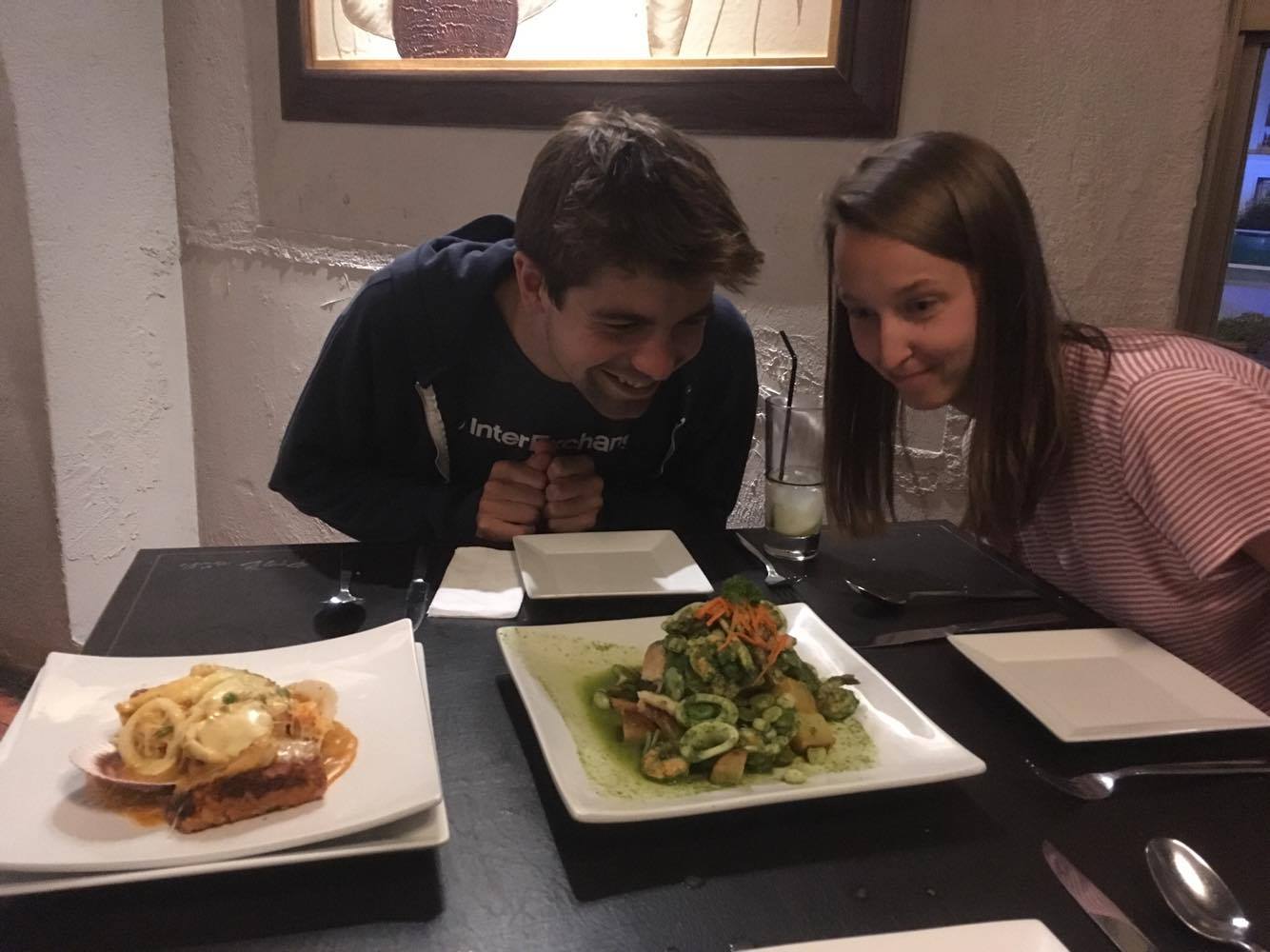From the moment I took my first bite in my new home, Santiago de Chile, I expected to be immediately enveloped in the richness of the food. The colors. The aromas. The deep taste of South American soil in every fruit and vegetable that grew right here on Chilean land. With both grange and sea, produce of all sorts would be plentiful and fresh. Typical Latin American essences would flavor the food: chili, lime, subtle and savory cheese, deep saffron spice. To top it all off, there would be avocados for days, on every plate, in every kitchen–avocado toast for all.
In reality, Santiago has two flavors: really salty and really sweet. There is nothing in between. I have been fed dishes with different names, different ingredients (supposedly), at different times of the day and, somehow, the flavor is always the same. There is no depth. There is no spice. There is just salt. Oh, and oil. Salt and oil. I haven’t eaten a single vegetable (unless potatoes count). And somehow there are lemons, but no limes.
In the country Chile, there are also, incredulously, no chilies. Since the food has no flavor, Chileans have resorted to adding condiments to everything they consume. Some add ketchup. Some add mustard. But the staple in every Chilean home is a giant bag, yes I said bag, of mayonesa. I have seen Chileans put mayonnaise on steamed (unseasoned) broccoli, fried dough and rice. After the meal is over and there is nothing left on which to put mayonnaise, I have seen my host mom eat a spoonful of this white, liquid Chilean gold.
The crazy thing is, Chileans think their food is delicious. Every day I come home from school and my mother asks, “Annita Maria, ¿como te fue el almuerzo? Rico, ¿no?” (I’m “Annita” in Chile because H’s are hard in Spanish and “Maria” because everyone is Catholic–I’m not.) I can’t be the ungrateful gringa and tell her that the lunch she packs me everyday tastes exactly the same as the last one. Instead, I smile real big, nod my head and respond, “Sí, ¡muy rico!”
Lastly, the avocados, or Paltas, in Chilean Spanish. It is true that they are plentiful. They’re a staple in every household. However, they don’t follow the rules of the normal, well-mannered avocados that every girl who wants to think she’s healthy knows and loves. They are about a fourth of the size of any avocado I’ve ever seen and take approximately seven million years to ripen. When they finally do decide to ripen, you have about six seconds to consume them before they turn brown.
My favorite part about traveling is the food. Trying new things, experiencing new flavors. But after my time here I will never again take for granted a burger at Bat 17 or BYO-Zoba or even a sandwich from Lisa’s. (Did I mention Sodexo provides the food for most restaurants in Chile?)
At the end of two months in Chile, the best food I’ve eaten has been Peruvian.
This piece is part of the ongoing series "Not a Study Abroad Blog." If you're interested in being interviewed about your experience or in writing a post, please email one of the editors at rachelwolfe2018@u.northwestern.edu or mollieleavitt2018@u.northwestern.edu. Also, follow our Instagram and submit photos of your daily mediocrities via direct message to @notastudyabroadinsta.




